I want this table to extend as possible to fill the remaining (empty) area of the linear layout that contains it

I generate the table using the following method
public void drawTable(LinearLayout tableLayout,String tableTitle, String[][] data,String[] headerTitles, int type){
//clearing previous views
tableLayout.setVisibility(View.VISIBLE);
tableLayout.setGravity(Gravity.CENTER);
int chids = tableLayout.getChildCount();
if (chids > 0){
tableLayout.removeAllViews();
}
if((headerTitles!= null) && (headerTitles.length != data[0].length) ){
return;
}
TableLayout table = new TableLayout(context);
// table.setStretchAllColumns(true);
// table.setShrinkAllColumns(true);
//Rendering the table title
TextView tableTitleView = new TextView(context);
tableTitleView.setText(tableTitle);
tableTitleView.setTextColor(Color.WHITE);
tableTitleView.setGravity(Gravity.CENTER);
tableTitleView.setTextSize(18);
tableTitleView.setTextAppearance(context, R.style.boldText);
tableTitleView.setBackgroundColor(Color.parseColor("#008888"));
tableTitleView.setPadding(2, 2, 2, 10);
tableLayout.addView(tableTitleView, new LinearLayout.LayoutParams(LinearLayout.LayoutParams.FILL_PARENT,LinearLayout.LayoutParams.WRAP_CONTENT));
ScrollView scroll1 = new ScrollView(context);
HorizontalScrollView scroll2 = new HorizontalScrollView(context);
int rows = data.length;
int columns = data[0].length;
if(headerTitles!=null){
//Rendering the header
TableRow headerRow = new TableRow(context);
for (int i = 0; i < columns; i++) {
TextView t = new TextView(context);
t.setTextSize(17);
t.setTextAppearance(context, R.style.boldText);
t.setPadding(5, 5, 5, 5);
t.setText(headerTitles[i]);
t.setGravity(Gravity.CENTER);
t.setTextColor(Color.WHITE);
t.setBackgroundResource(R.drawable.text_border_header_1);
headerRow.addView(t, LinearLayout.LayoutParams.WRAP_CONTENT,
LinearLayout.LayoutParams.WRAP_CONTENT);
}
table.addView(headerRow, new TableLayout.LayoutParams(
LayoutParams.WRAP_CONTENT, LayoutParams.WRAP_CONTENT));
}
//Rendering the Table Data
TableRow row;
for (int current = 0; current < rows ; current++) {
row = new TableRow(context);
TextView t;
for(int i =0 ; i < columns ; i++){
t = new TextView(context);
t.setTextSize(15);
t.setPadding(5,5,5,5);
t.setText(data[current][i]);
t.setGravity(Gravity.CENTER);
if (type == 1) {
if (current % 2 == 0) {
t.setBackgroundResource(R.drawable.text_border_odd);
} else {
t.setBackgroundResource(R.drawable.text_border_even);
}
}else if (type == 2) {
if (current % 2 == 0) {
t.setBackgroundResource(R.drawable.text_border_odd_2);
} else {
t.setBackgroundResource(R.drawable.text_border_even_2);
}
}else if (type == 3) {
if (current % 2 == 0) {
t.setBackgroundResource(R.drawable.text_border_odd_3);
} else {
t.setBackgroundResource(R.drawable.text_border_even_3);
}
}
t.setTextColor(Color.BLACK);
row.addView(t,TableLayout.LayoutParams.FILL_PARENT,TableLayout.LayoutParams.WRAP_CONTENT);
}
table.addView(row, new TableLayout.LayoutParams(LayoutParams.FILL_PARENT, LayoutParams.WRAP_CONTENT));
}
scroll2.addView(table,LinearLayout.LayoutParams.FILL_PARENT, LinearLayout.LayoutParams.FILL_PARENT);
scroll1.addView(scroll2,LinearLayout.LayoutParams.FILL_PARENT, LinearLayout.LayoutParams.FILL_PARENT);
scroll1.setPadding(2, 20, 2, 20);
tableLayout.addView(scroll1,LinearLayout.LayoutParams.FILL_PARENT, LinearLayout.LayoutParams.FILL_PARENT);
}
I couldn't figure out exactly the problem with my code.
EDIT :
when I added the table directly to the linear layout instead of the scroll views the table fits with the linear layout width. It seems that my problem is with the scroll view